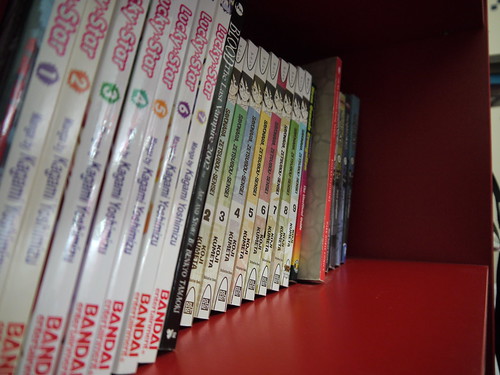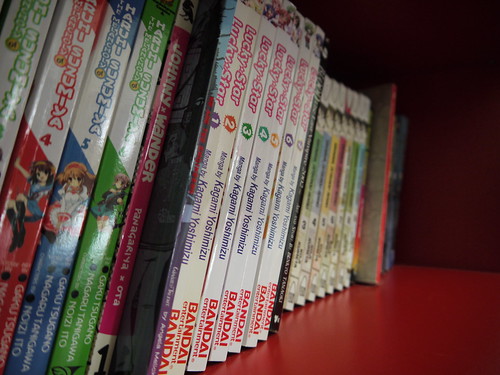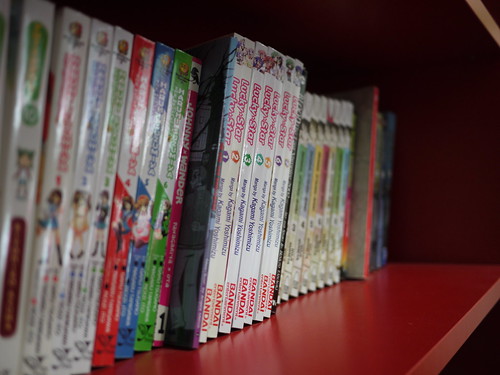It’s winter around here at the moment, and there’s not much to do outside. So I’ve been spending some time playing around with my new lenses, and learning what kind of effects they have.
And what better way to experiment than to take pictures of… my bookshelf?
This first picture (above) was taken with my kit zoom lens, at its widest setting (14mm). It’s an OK shot, but because the lens I used here is so wide (and the bookshelf itself is so short), it isn’t terribly interesting.
This next picture (above) was taken with my 20mm (f/1.7) prime lens. I like this picture a lot more, because the longer focal length (narrower field of view) works better with the size of my shelf, and helps keep the books themselves as the focus (if you’ll pardon the pun) of the picture. Also, the nice shallow depth of field helps bring attention to just the set of books in the middle there, which I like as well.
This picture (above) was again taken with my kit zoom lens, again at 14mm. This one is a little bit better than the first one, but it’s still not terribly interesting, because the books on the left are still too much in focus, even though they are not the ones I was pointing at. Still not bad, but not great either.
This final one was taken with my 20mm prime lens. Unlike the first two pictures, I actually took this one from a slightly different position – I backed up a bit – to make up for the narrower field of view. So even though you can actually see a little bit more of the shelf, the books in the middle (my Lucky Star collection) are in sharp focus, but the rest of the books both to the left and right are out of focus. This keeps your attention squarely where I wanted it, and is exactly what I wanted to do.
By performing these experiments, I’ve really gotten an intuitive feel for what sort of results I’ll get with each lens, and with the different focal lengths (and, of course, f-stops). Sure, I knew intellectually what should happen, but until I see it in action, I don’t really get a feel for it – and I’m one of those sorts of people who learns best by seeing & doing.
There’s still more for me to learn about photography, but these experiments are a neat (and fun!) way to learn (and understand) techniques and give meaning to all the often confusing terminology used in the world of photography. I highly recommend trying some experiments of your own – you might be surprised at what you can learn!
(If you’re interested, you can see all the pictures I took (along with others in my office) here.)



